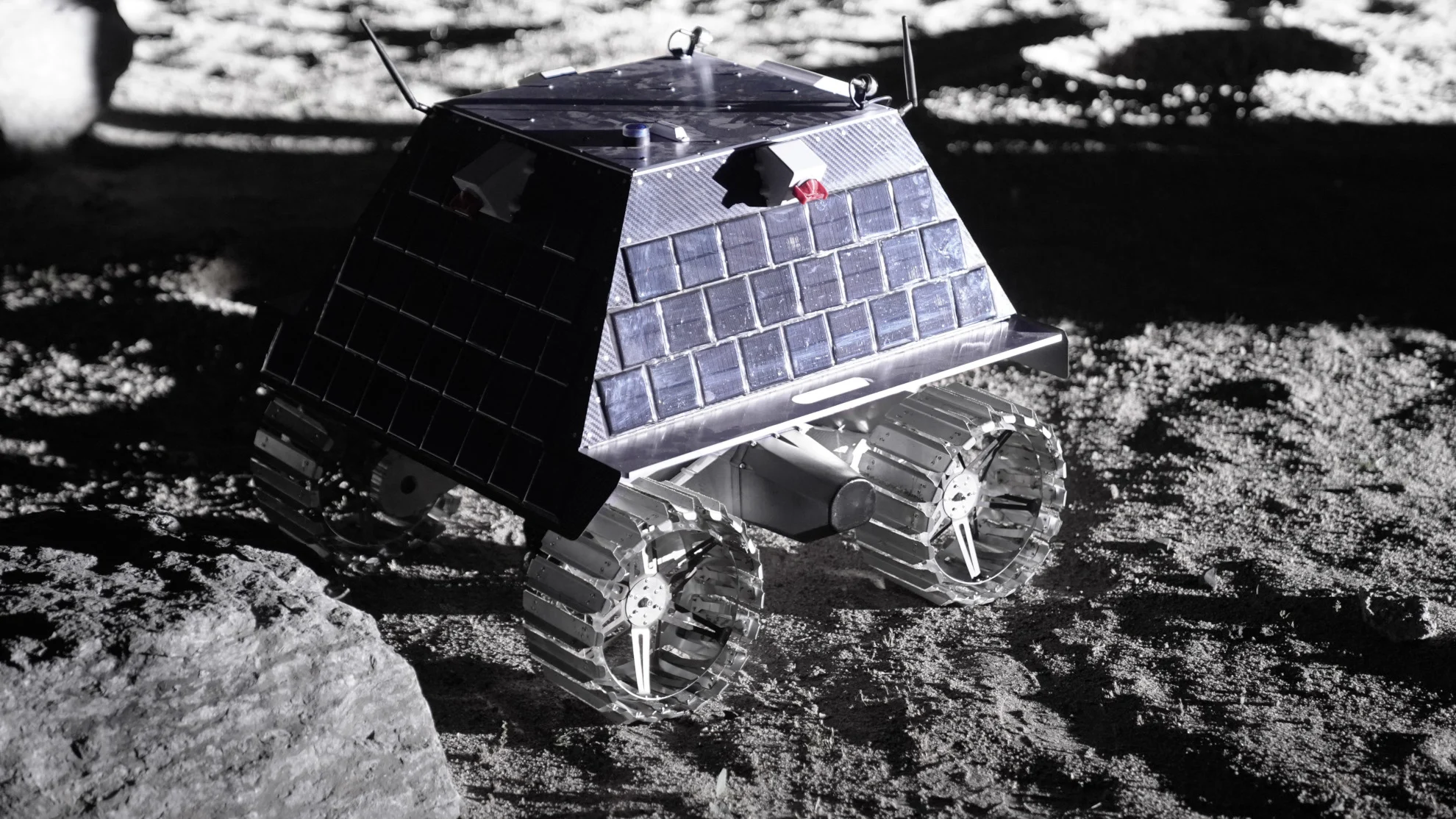
Canada's new Moon rover needs a name, and it's up to us to help!
There's no "Moony McMoonFace", but we have four names to choose from for this plucky little robot.
Within the next few years, Canada's first lunar rover will launch to the Moon's south pole, where it will delve into perpetual darkness in search of water ice. However, before it leaves, this little robot needs an official name, and it's up to the public to choose it.
For humanity's exploration of space to successfully move forward, to the Moon, Mars, and beyond, one of the key ingredients is finding the resources we need off-world. That includes metals and minerals for constructing habitats and spacecraft. However, the most important resource is water, which can be used for drinking, to grow food, to supply us with oxygen to breathe, and even fuel for the spacecraft we send out into the solar system.
We've seen ice on Mars, but the Red Planet is too distant for us to put that ice to good use in the near future. Comets are another excellent source, but there isn't always one nearby to provide for us. However, there's another source that's relatively close and always available: the Moon.

The craters highlighted in blue on this map of the lunar south pole are those that experience perpetual night, as sunlight never reaches their interior. These are the locations most likely to contain water. (NASA)
It may seem an odd choice, given the extreme conditions and lack of atmosphere there. Even so, the Moon is a prime location to search for water. Spacecraft and telescopes have provided us with ample evidence that there may be large deposits of frozen water trapped in the perpetual darkness of the craters at the lunar south pole.
To aid in the search for this valuable resource, Canada is sending a small robot rover to the Moon within the next few years.

Canada's prototype lunar rover explores simulated lunar terrain under lighting conditions that emulate what it would experience at the Moon's south pole. (Canadian Space Agency)
"We haven't chosen an easy mission for Canada's first trip to the moon," says Western University's Dr. Gordon Osinski, the principal investigator of this mission. "We are going to one of the most hostile regions of the lunar surface: the South Pole. Because of this, our rover must survive very long and cold lunar nights, where the temperature can drop below minus 200C for up to 14 Earth days."
Even while the Sun is shining on the region the rover lands in, it will also have to endure similar frigid temperatures as it explores the dark craters that are the focus of its mission. The only light and heat the robot will have is what it brings along with it, from lamps that will reveal its path and a heater to keep its electronics from freezing.
READ MORE: NASA has its first detailed map of water on the Moon
Naming Canada's Moon rover
Between now and December 20, 2024, the Canadian Space Agency is hosting a campaign to pick the name of this new rover. Unlike similar campaigns from other space agencies, the CSA is not taking suggestions on the name (thus, we won't have Moony McMoonface exploring the lunar surface for us).
Instead, they have chosen four appropriate names, with the final name chosen from among those by the public:
Athabasca: Potentially start a trend! This choice would name the rover after the river that flows through Alberta from Jasper National Park to Lake Athabasca. According to the CSA, "Canada's rivers and streams have been the routes of the continent for millennia and continue to be pathways of discovery, transport and exchange. The names of the rivers also reflect Canada's diversity and heritage." Picking this choice could set a precedent where future Canadian rovers sent out into space also take their names from the natural wonders of our country.
Courage: This would continue a trend set by NASA, who has named several of their rovers after admirable qualities — Spirit, Curiosity, Perseverance, and Ingenuity. "To be brave and confident to do what you believe in, Courage is representative of the work that has led to the Canadian lunar rover," said the CSA. Besides, we don't know exactly what the rover will encounter when it drives down into these dark craters. That effort alone will take an act of courage by the mission team.
Glacier: What could be more appropriate than naming the rover after the very thing it is searching for? "The name also appeals to Canada's northness: glaciers are important features of Canada's West and Arctic," the CSA added.
Pol-R: A bit of a creative spelling of the word, just to give it that 'sci-fi' feel, but this name reflects the dual polar nature of the mission. As the CSA said, "A big part of Canada is located in the north polar circle, and the rover mission will be landing in the south polar region of the Moon."
Any one of these four names would be great for the rover, but which one do you think is best? Head to the Canadian Space Agency website to cast your vote!
"The Canadian Space Agency (CSA) wants its name to be representative of the mission or to allude to Canada's legacy or future in space. The rover will be the first in a series of anticipated lunar rovers, and its name should be inspiring!" the CSA wrote.
(Thumbnail image courtesy the Canadian Space Agency)











